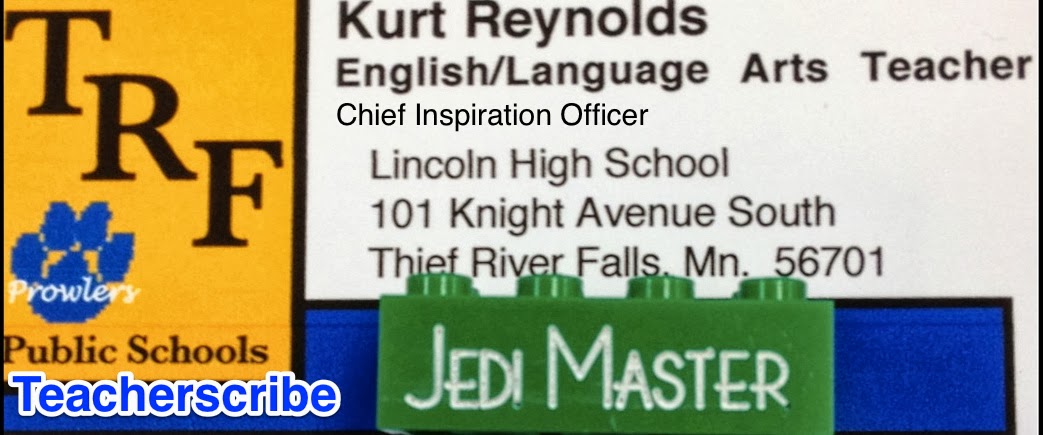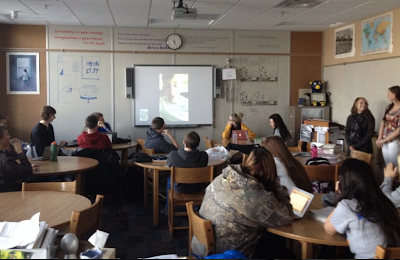They read the book. Then they self organized into groups and selected one chapter from the book.
After that, they focused on the main idea from the chapter. Then they developed a lesson plan according to the Madeline Hunter Lesson Plan Template and then taught it to the class.
Here are the pictures.
The first group that went happened to have a student who was on vacation in Mexico. No problem. They simply had him FaceTime with me from his school laptop that he brought with him on vacation to my laptop. He talked and interacted with the class for the first part of the lesson plan.
The group also developed a Prezi that illustrated each main point from their chapter.
Then they had the class work in small groups to improve an existing product.
Each table then used Padlet to post their ideas.
What was great about this was on Tuesday I was at TIES. I was sitting in on a session called "Everything I learned about Engagement I learned in Kindergarten." The presenter had use go to his wiki and then use Padlets in small groups.
Some were unfamiliar with Padlet. As I was explaining how some of us at LHS used it, I received a text from Hunter, one of my students from College Comp II. He wanted to know if I could look at their lesson plan for the following day. When I did, I noticed that they had actually created a Padlet site to do the exact same thing our presenter was asking us to do.
I got to brag my students up to both my group and our presenter.
If you give talented kids the right context and the right freedom and support, they'll blow you away.
Here is the proof from the first group's lesson plan for the chapter "The World is a Small Place." Again, to prove that point, they had Turner "be with the class" despite being in another country.
Turner on my laptop.
Turner talking to the class on the SMARTboard from his hotel room in Mexico.
The cookies one of the students baked to get us in the Christmas mood as we worked on the lesson.
The next group focused on the chapter "Use Your Hands."
They stated their main idea. They asked us to brainstorm ideas for new products. Then they had us take the supplies they gave us (noodles, marshmallows, cardboard, and paperclips) to make something a model of our inventions.
This is what it looked like -
Garret and Kyle explain the assignment.
The students worked quite hard.
This product was designed to scoop you out of bed and put your on your feet to start the day. They even had an alarm clock next to the bed (it's in the upper left).
This group wanted to design a product that made healthy food (like broccoli) taste like junk food. Now that's a great idea.
My group of future engineers designed a swinging pendulum out of noodles, cardboard, marshmallows, string, and a paper clip.
One of my computer geeks designed his own spaceship using a computer program.
This group designed a hover craft.
This student drew a protest fist and then re-created with noodles for bones and marshmallows for flesh.
As I tweeted out the photos, I was delighted to see they were favorited by this person.
That just so happens to be Austin Kleon, the author of the book we just read! The world is a small place indeed!
And as cool as that was, this compliment on Twitter from one of my students was the highlight of the year.





















No comments:
Post a Comment